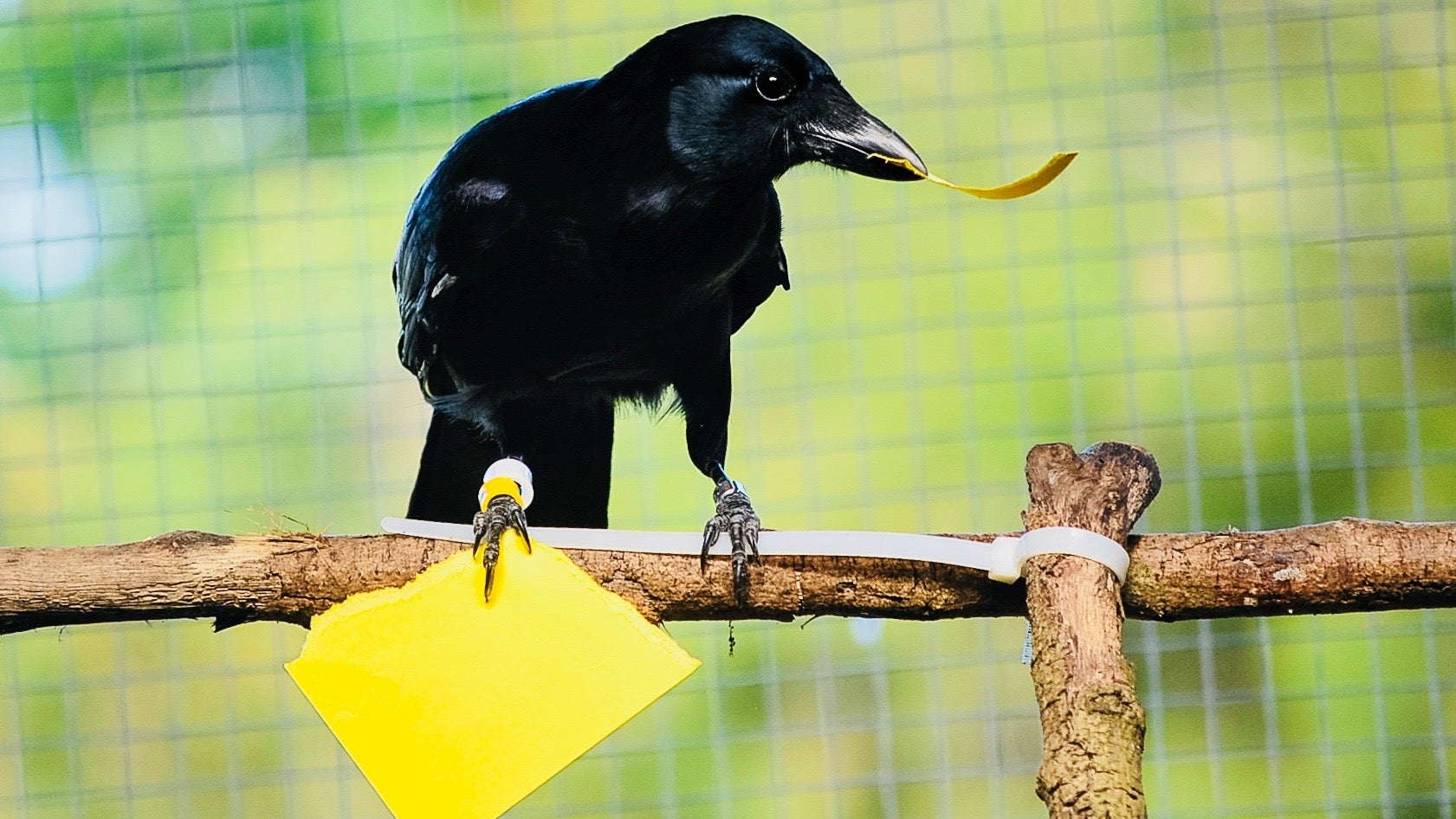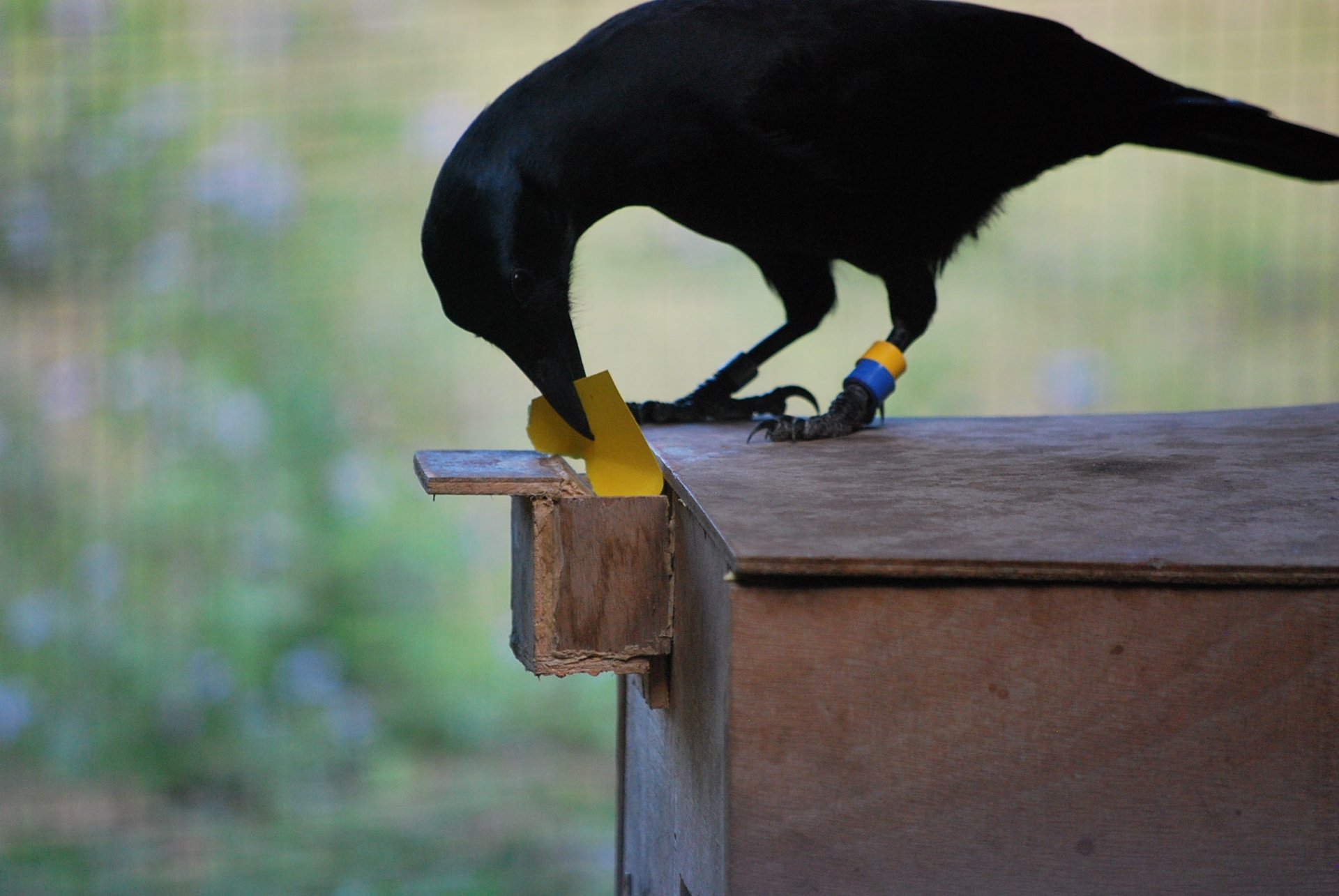A new study shows crows can design tools from memory—just like humans
Humans don’t learn everything anew with each generation—and neither do crows, it seems.


Humans don’t learn everything anew with each generation—and neither do crows, it seems.
Cultures accumulate knowledge cumulatively over time by building on the know-how of the people who came before. This requires a complex cognitive capacity capable of memory, language, imitation, teaching, and imagination.
It turns out that New Caledonian crows also have sophisticated brains, albeit no tradition of language, teaching, or imitation as far as we know. They can remember what they’ve seen and even design tools based on memory, without having witnessed the implement constructed. That’s a rare skill in the animal kingdom. In a study in Scientific Reports released today (June 28), researchers from Cambridge University in England and the University of Auckland in New Zealand argue that “mental template matching” allows crow culture to pass on tool-making traditions.
New Caledonian crows make basic stick tools, hooked stick tools and barbed tools out of plant leaves. It’s not clear if they learn tool designs from each other or how these designs seemingly have been improved over time. In the wild, the crows don’t appear to closely observe or imitate each other. Still, particular designs have been seen in different areas over several decades, and during that time, the tools have improved. This suggests, according to the study, that tool-making skills travel throughout crow populations, though how knowledge is transmitted has been a mystery.

The researchers believe that crows make a mental template of the tools—like humans, they can see something and, without watching the manufacturing process, fashion a similar or better item.
To test this theory, the team had eight crows make tools with unknown materials and retrieve food from a vending machine with the implements. They explain in the study:
We developed an arbitrary manufacture task that mirrored pandanus tool manufacture, in that it required the ripping of material in order to gain food. However, instead of pandanus leaves, we used an unfamiliar manufacture material (card). By requiring crows to use this man-made material to create items that take different shapes than pandanus tools, our task had sufficient novelty to prevent the crows from transferring learnt rules formed during their prior tool manufacture experience in the wild.
Six of the eight crows in the study successfully fashioned tools from the paper cards, although the material lacked qualities that leaves have—like veins—making the task more difficult. The two who were unsuccessful were juveniles, indicating their cognitive capacity wasn’t fully developed.
One particularly clever crow, named Emma, was super skilled. Emma made modifications to the card tools so they more closely resembled the tools she first saw and were more uniform all around.
“Our results provide the first evidence to suggest that New Caledonian crows have the cognitive capacity to manufacture objects from a mental template,” the study states. Based on their findings, the researchers now believe crow culture evolves with memory. “Mental template matching is now the leading hypothesis to explain why New Caledonian crow tools show some of the hallmarks of cumulative cultural evolution,” they conclude.